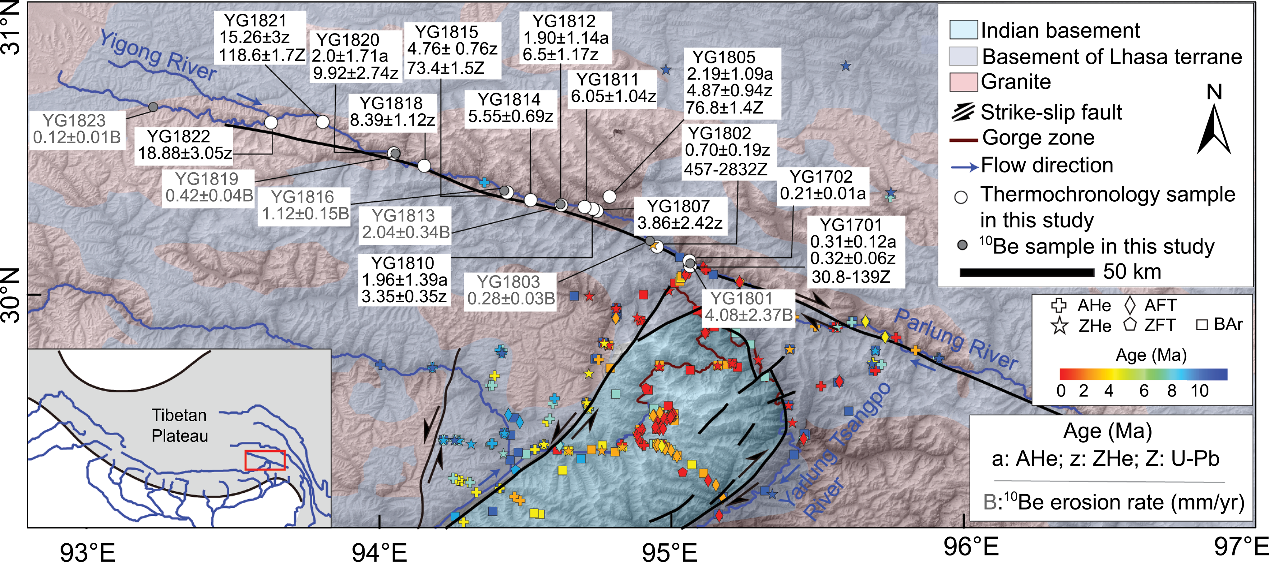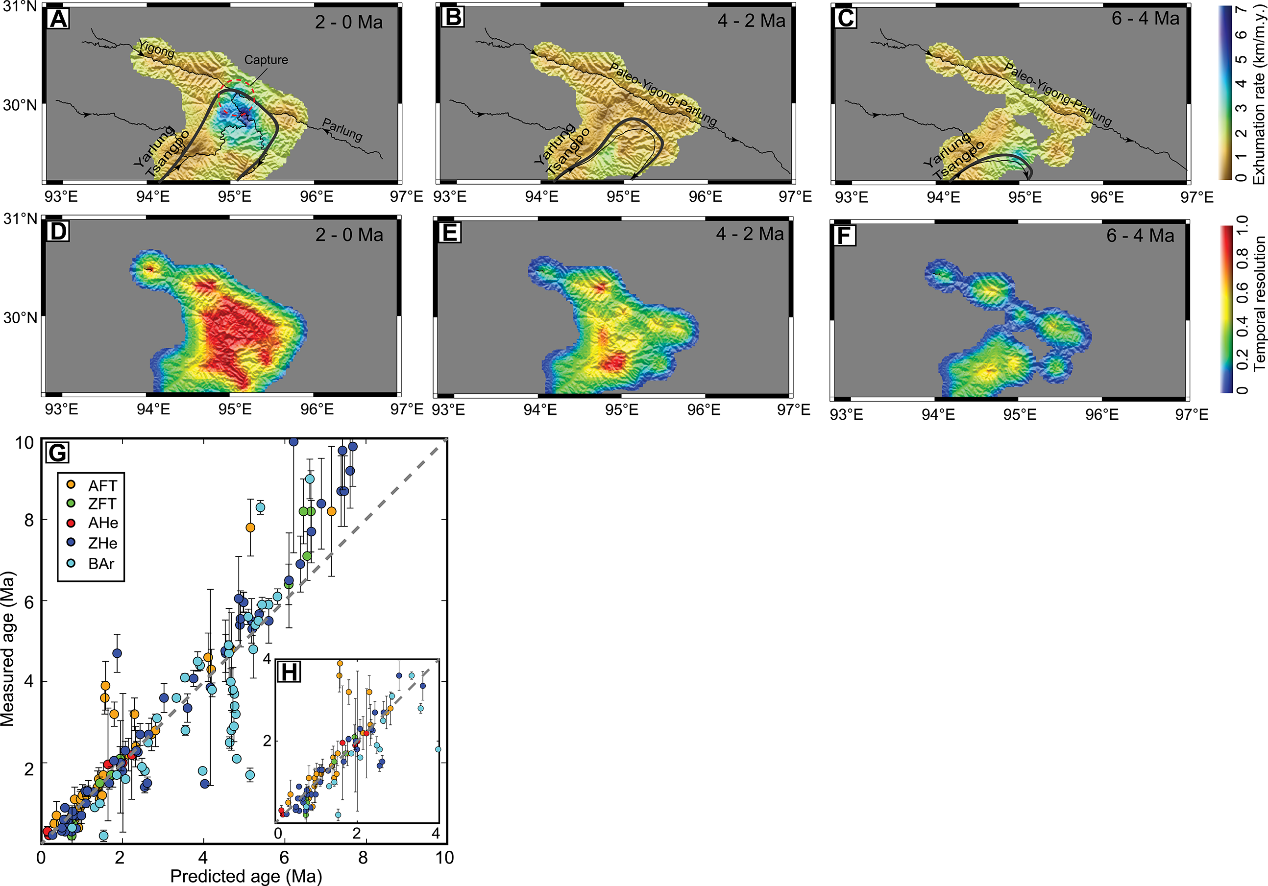Editor: 邵丹蕾 Author: HE Yuxin Time: 2022-02-21 Number of visits :162
The Namche Barwa syntaxis in the eastern Himalaya is rapidly evolving in terms of its tectonics and topography. Here we constrain the exhumation history of the Yigong River to the immediate north of the syntaxis across different time scales using a multidisciplinary approach. Our new thermochronometric data reveal an acceleration of exhumation rates since 2 Ma in the downstream of the Yigong. Cosmogenic nuclides and thermoluminescence thermochronometry analyses confirm persistent rapid exhumation in the lower Yigong over the Quaternary with further increased exhumation in the last 100 ka. Together with the analysis of the morphology of the Yigong River profile, we interpret that northward expansion of the syntaxis together with capture of the Yigong by the Yarlung Tsangpo River during this expansion is responsible for the exhumation history of the Yigong River in the Quaternary.
Article information: Rong Yang, Frédéric Herman, Ting Liu, Rabiul Haque Biswas, Maria Giuditta Fellin, Yuntao Tian, Junfeng Gong, Ruohong Jiao, Colin Maden, Hanlin Chen; Enhanced Quaternary exhumation in the Namche Barwa syntaxis, eastern Himalaya. Geology 2021;; 49 (8): 958–962. doi: https://doi.org/10.1130/G48595.1

Figure 1. Geologic map of the Namche Barwa syntaxis and nearby region, adapted from Seward and Burg (2008), showing sample sites with age and erosion rate data from this study (white and gray sites). Previous thermochronometric data (sites in color) are from Malloy (2004), Lei et al. (2008), Seward and Burg (2008), Yu et al. (2011), Zeitler et al. (2014), Gong et al. (2015), Tu et al. (2015), and Yang et al. (2018). AHe—apatite (U-Th)/He; ZHe—zircon (U-Th)/He; AFT—apatite fission track; ZFT—zircon fission track; BAr—biotite 40Ar/39Ar; U-Pb—zircon uranium-lead.

Figure 2. Modeling results by inverting thermochronometric ages. (A–C) Exhumation rates, and the temporal resolution (D–F), over the past 6 m.y. in 2 m.y. intervals. Temporal resolution values of 1.0 imply perfect resolution in time, and are dimensionless. Thick gray lines in A–C show outline of growing anticline, and black lines show reconstructed drainage pattern after Seward and Burg (2008) and Lang and Huntington (2014). The arrows on the black lines indicate river flow direction. (G) Measured ages with errors against predicted ages from the modeling. (H) The same data as in G within the range of 0–4 Ma. Gray dashed lines indicate the 1:1 lines. AFT—apatite fission track; ZFT—zircon fission track; AHe—apatite (U-Th)/He; ZHe—zircon (U-Th)/He; BAr—biotite 40Ar/39Ar.
